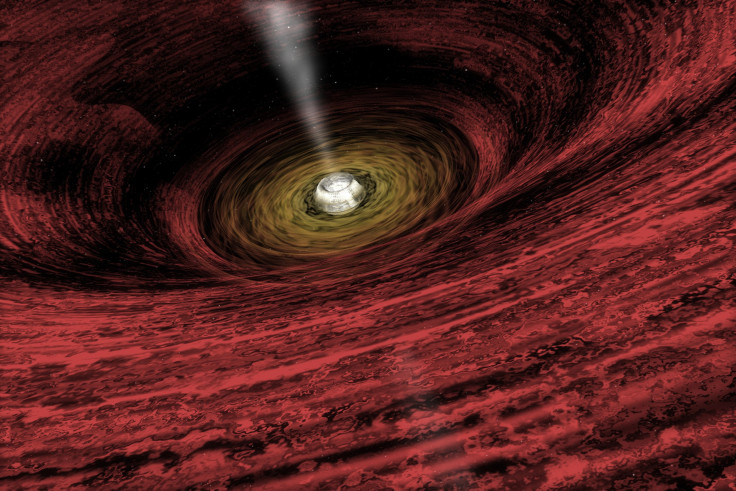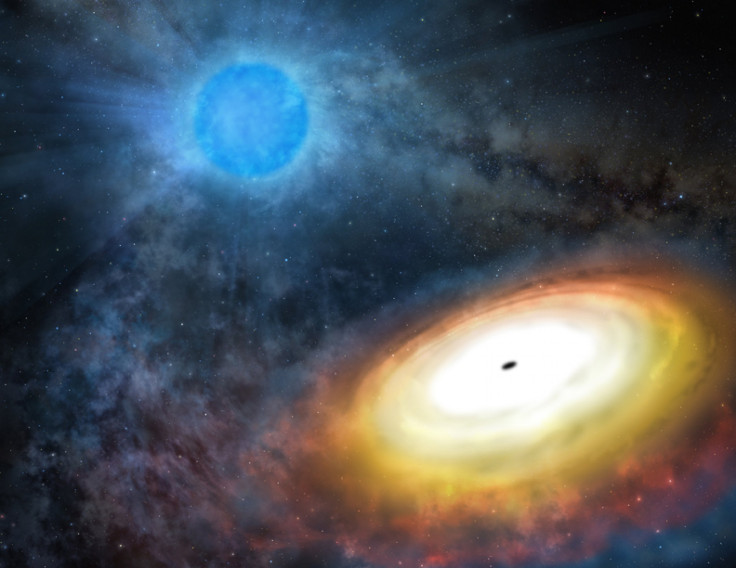New Mystery In Space: A Weird Black Hole That Weighs Less But Eats Plenty

An extremely bright black hole that is powering an energetic X-ray source in a neighboring galaxy has left astronomers baffled with its surprising capacity to consume matter, despite being unexpectedly lightweight, a new study reveals.
The black hole, which resides in the Pinwheel Galaxy about 22 million light years away from Earth, swallows the dust and gas around it in a “surprisingly orderly fashion.” And, with its incredible luminosity, this celestial phenomenon is expected to force a rethink of how some black holes radiate energy.
“It has elegant manners,” Stephen Justham of the National Astronomical Observatories of China said, in a statement. “We thought that when small black holes were pushed to these limits, they would not be able to maintain such refined ways of consuming matter. We expected them to display more complicated behavior when eating so quickly. Apparently we were wrong."
According to astronomers, larger black holes tend to produce softer X-rays while smaller black holes tend to produce relatively harder X-rays. The black hole system in question, called M101 ULX-1, is dominated by soft X-rays, so researchers had expected to find a large black hole as its energy source.
In addition, the black hole’s brightness is so incredible that astronomers had suspected that ULX-1 contained an intermediate-mass black hole weighing in between 100 and 1,000 times the sun's mass. However, new observations made at the Gemini Observatory in Hawaii, published in the Nov. 28 issue of Nature, indicate that M101 ULX-1’s black hole is on the smaller side, confusing astronomers.

“Theories have been suggested which allow such low-mass black holes to eat this quickly and shine this brightly in X-rays. But those mechanisms leave signatures in the emitted X-ray spectrum, which this system does not display,” Jifeng Liu, of the National Astronomical Observatories of China, and the lead author of the study, said in the statement. “Somehow this black hole, with a mass only 20-30 times the mass of our Sun, is able to eat at a rate near to its theoretical maximum while remaining relatively placid. It’s amazing. Theory now needs to somehow explain what’s going on.”
The discovery also delivers a blow to astronomers hoping to find conclusive evidence for an “intermediate-mass” black hole in M101 ULX-1 as such black holes would have masses roughly between 100 and 1,000 times the mass of the Sun.
“Studying objects like M101 ULX-1 in distant galaxies gives us a vastly larger sampling of the diversity of objects in our universe,” Joel Bregman of the University of Michigan, a member of the research team, said. “It’s absolutely amazing that we have the technology to observe a star orbiting a black hole in another galaxy this far away.”
© Copyright IBTimes 2024. All rights reserved.






















